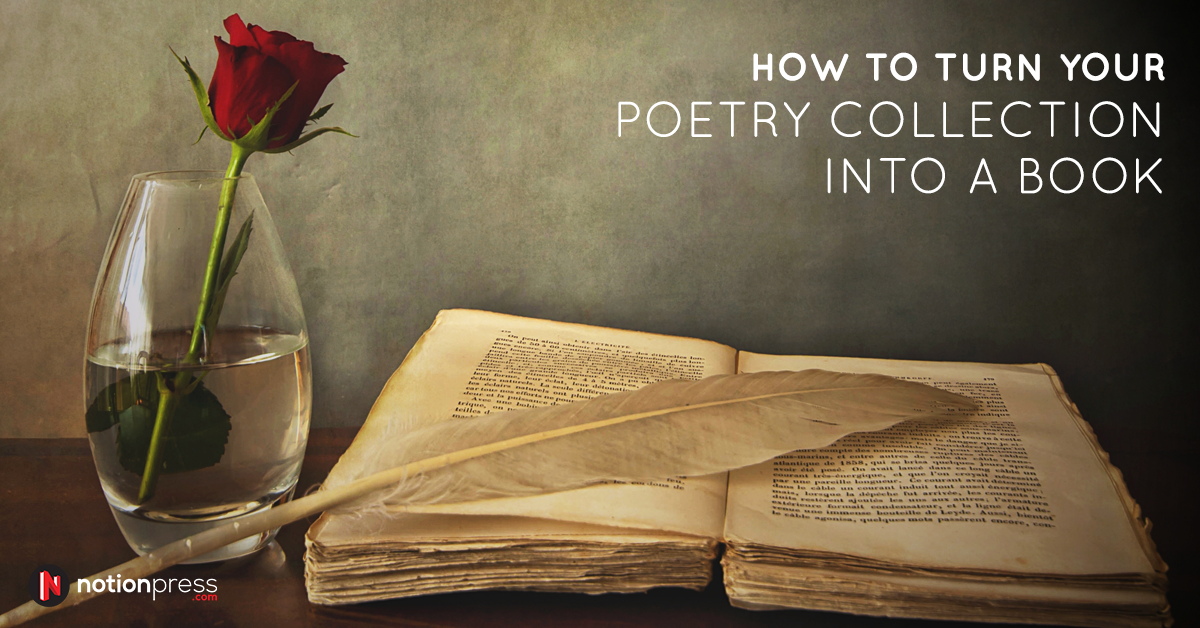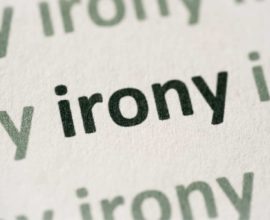How to Turn Your Poetry Collection into a Book
You’re a poet and you know it, but do you have the ambition to let everyone else know too? If so, the best way to bring about awareness for your collection of poems is to turn them into a book. Every aspiring author knows that earning reputation means being known as someone who published a worthy read. Here is a great guide to turn your poetry collection into a book.
While publishing a poetry book may seem like the hardest part, the first step, which is assembling your collection, is quite a challenge. With a good amount of time and more importantly, the right mindset, you might just end up with a pretty neat book.
Before you begin
Today’s advanced technology has given writers a multitude of options to get their works read. So, its best for you to make a conscious decision on how you want to present your works. For starters, there are three formats you can choose from for your presentation style:
Paperback/Hardbound book
Chapbook
e-book/Blog
Paperback/Hardbound books are the standard formats. Selecting to do this would take you a step closer to be considered a proper published author. The flipside is that books are more expensive to make, let alone publish and promote. They can also be time-consuming and require a large amount of content to be considered an actual book.
Chapbooks go as far back as the 19th century and are considered as one of the early forms of publishing literature during the industrial revolution. Modern chapbooks look similar to pamphlets, run about 40 pages and are mostly used as a medium for light reads like poetry. Chapbooks are also cheaper to make and can be done by yourself. Opt for this format if you have budget constraints and fewer poems in your collection.
Blogs may not be considered as a proper publishing source, but can still be handy for first-time poets who are eager to show their work. Making a blog costs virtually nothing as you have multiple free blogging platforms, but for those looking to go pro, opt for creating a premium blog and website where you can own what you write and can protect your material. E-Books are not just a digital version of a paperback book; they can also give you the added advantage of being able to continuously update your poems. While books restrict you to a certain number, e-books give you the option of adding more content for your readers without having to publish an entirely new set.
Organising your poems
Start by planning out what goes in your book; either create a poetic anthology or just have an assortment of poems. To prepare your manuscript, you also need to decide whether you will be writing by hand or printing it out. Don’t bother about the size of the paper, but make sure you get a manuscript quality paper that feels not only great to write on but also looks great in presentation.
Whatever be the theme of your poems, make sure it is arranged in a logical fashion. You can think of creating a chronology and see how you can interlink each poem. Organisation is key when preparing a book, it gives your work a sense of structure and ensures a pleasant experience for your potential readers.
Poetry collections look great in a chapbook, so let’s get cracking and guide you on how to make one with all your rhymes in it.
Creating a Chapbook
As mentioned earlier, chapbooks can be created easily and by yourself. All the material required can be found at your nearest supermarket at affordable rates. Here’s a list of what you will need:
Cardboard paper (for your book cover)
Binding Twine
Giftwrap, colourful paper or plain colours (for covering the cardboard)
Cellotape
Scissors
Manuscript paper
Scale
Hole puncher
When you’re all set, get comfortable and begin the meticulous process of making the chapbook that compliments your poetry collection. Here’s a step by step process of how it’s done:
The cover
1. Take your ruler and measure out a size of 4.25 (width) by 5.5 (height) inches (standard size of chapbook paper). Cut out two pieces of cardboard for your front and back covers that are roughly one inch more on either side to create a snug fitting for the papers.
2. Use your choice of colourful paper to wrap up the cardboard or use clear colours if you plan to do a cover art.
3. If you’re gifted with artistic talent as much as your rhyming skills, scribble through some cover designs that you believe can relate well with the theme you have chosen before finalising one for your cover. This is an important part, so if you’re not up to the task, outsource it to someone who can do it.
The papers
1. Start by carefully numbering out your pages in the order of chronology you had decided.
2. Make sure you write the poems only on one side of the paper.
3. Keep the other side of illustrations or wordy chronological connectors.
4. Same as for the cover, illustrations can complete your poems. Experiment yourself or ask for help.
Binding it all together
1. Fit the properly arranged papers between the two covers.
2. Punch a hole through the whole lot. Make sure you punch not too close to the writing or illustrations. Drawing borders make this easier.
3. Use the binding twine to firmly grip everything together.
Getting your poetry published
Now with you chapbook ready, the real challenge comes; getting your work noticed. The reason we suggested a chapbook is that there are national and international competitions running throughout the year for chapbook makers of any literature. Get your work registered to as many of the competitions as you can and soon enough your hard work will be paid off. Popular publishers could notice your work, leading to profitable book publishing deals across all platforms.
Be a social poet
You can gain more traction by marketing and promoting your poems on various social media platforms and your blog. Having a dedicated band of followers on this platform builds your reputation through word of mouth, ultimately increasing the chance of publishers becoming aware of your talent, which could lead to book deals being made quicker.
The Divine Comedy- Dante Alighieri
Considered one of the finest works of poetry ever, Dante’s Divine Comedy is not particularly a comedy, rather an allegory. The poem is also very complex and has numerous instances of religious references, scientific themes and mathematical formulae entwined in witty Italian dialogue. Translated into numerous languages over the years, Dante’s poem has been decrypted to be seen as more than just a good read but a lesson for mankind. The poem tells the tale of Dante’s journey to the afterlife, as he is guided through three different stages; hell, purgatory and paradise. On the first two stages, Dante witnesses the wrath of God on sinners; how each type of sinner suffers in unique ways for his crimes. At last, Dante reaches paradise, where he describes in awe his vision of the holy trinity. A phrase from the poem reads:
But already my desire and my will
were being turned like a wheel, all at one speed,
by the Love which moves the sun and the other stars
Shakespeare’s Sonnets- William Shakespeare
You know what to expect when you see a William Shakespeare collection. Shakespeare’s Sonnets compiles the best poetic verses ever written by the famous playwright. The sonnets are linked together with the central themes of youth, beauty, love and sexuality. There is a total of 154 sonnets, with 126 addressed to a young man and 28 addressed to a woman. The unique thing about these sonnets is that they have a story flowing between each one of them, all connected with powerful characters; the fair youth, the dark lady and the rival poet. Shakespeare’s Sonnets has been described as the beginning of modern love and have greatly influenced cross-cultural romance among the new generation. A line for the poem reads:
A woman’s face with nature’s hand painted,
Hast thou, the master-mistress of my passion;
A woman’s gentle heart, but not acquainted
With shifting change, as is false women’s fashion.
The Selected Poems of Li Po- David Hinton
David Hinton gives us a reimagining of Li Po’s (known as Li Bai) finest poetry. Li Po is an important figure in Chinese history and is considered a poetic mastermind of the Golden Age of China (700 AD). Much of Li Po’s poems reflect his life, the journey he took across the lands and the people he met. The poes is so powerfully written that their verses can even be considered relatable to this day and age. Po’s poems glorify peace and prosperity while showing disgust towards war. His Zen-inspired poetic style often makes readers think deeper beyond the simple structure of the poems. The highlight of each poem is the way the imagery connects to the words, giving a fulfilling experience to readers. A line from one of his poem reads:
“The birds have vanished from the sky,
and now the last clouds slip away.
We sit alone, the mountain and I,
until only the mountain remains.”
Oracle- Cate Marvin
Cate Marvin’s Oracle is a powerfully written anthology that deals with the struggles of today’s youth including the tortures of high school, violence against women and the difficulties of living in a broken world. The theme may be considered as horror poetry but the poems have moments of light humour. The central characters of the poem involve dead people who speak directly to the reader and explain the consequence of their actions in a broken narrative that is partly rhythmic. While being gory and at times outright ridiculous, the way Cate Marvin writes her verses puts the reader in a deep sense of curiosity over the plausibility of it happening in real life. A line from the poem reads:
“You are never not what you were…
It’s not that masks themselves are lies, rather
our masks are us, therefore uniform: fear us.â€
You may also find it interesting to explore our other resources on Writing & Edition for first time authors. Are you the type of writer who enjoys sharing personal experiences? Have a look at our guide on how to create an autobiography.






